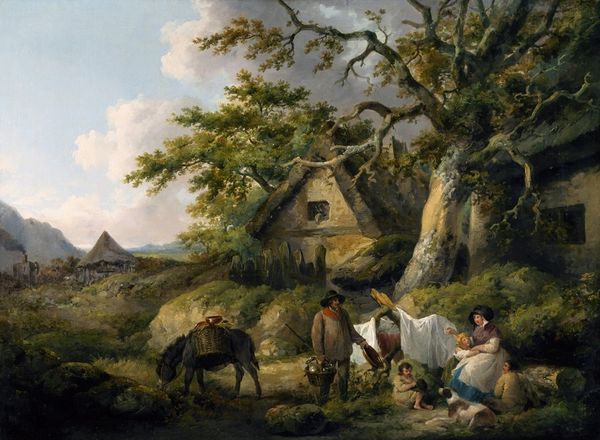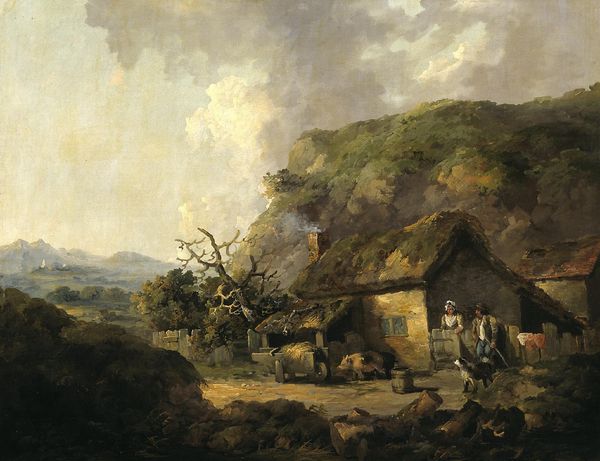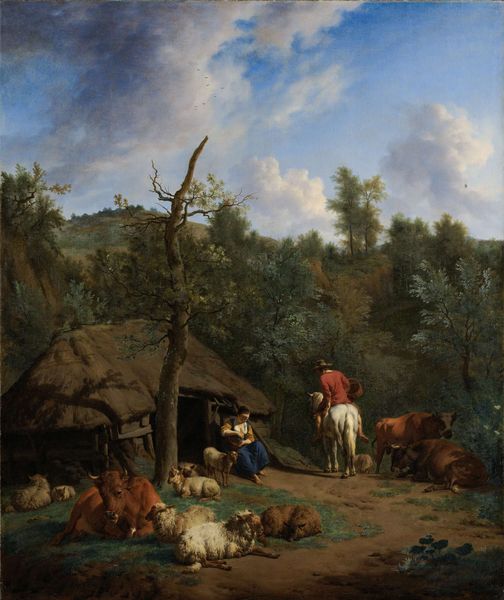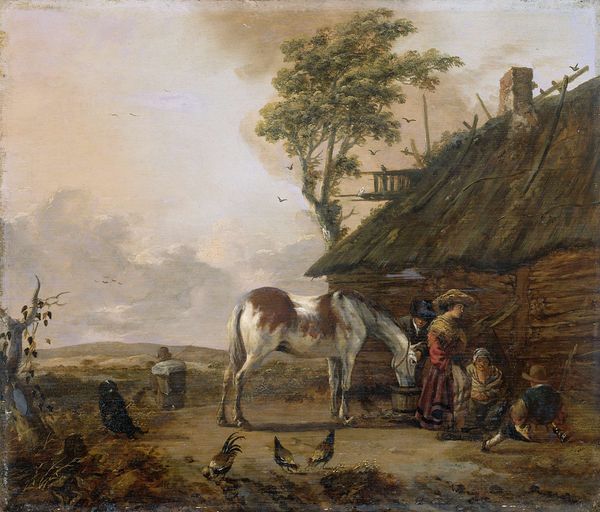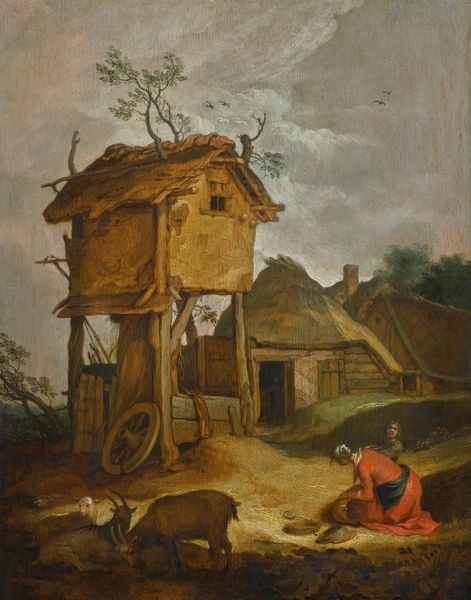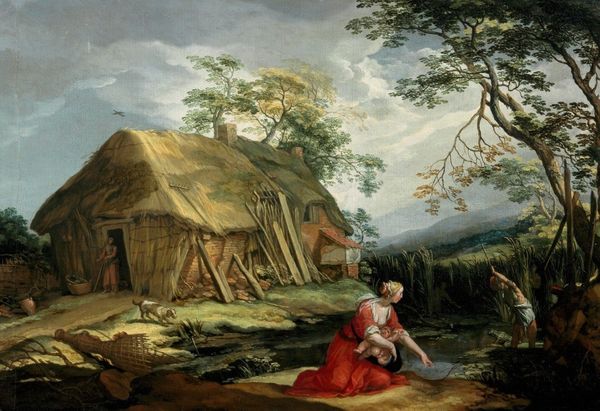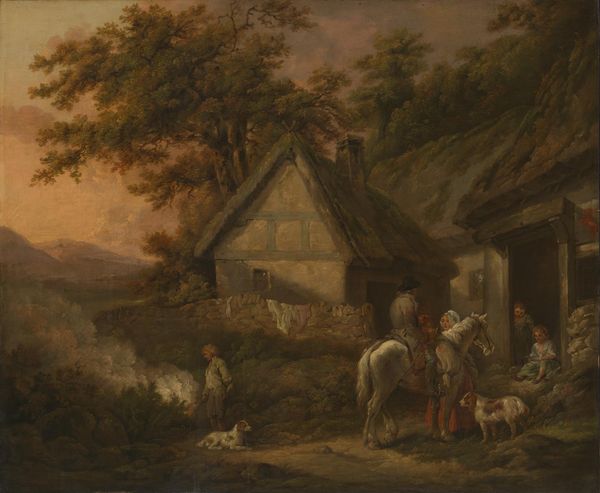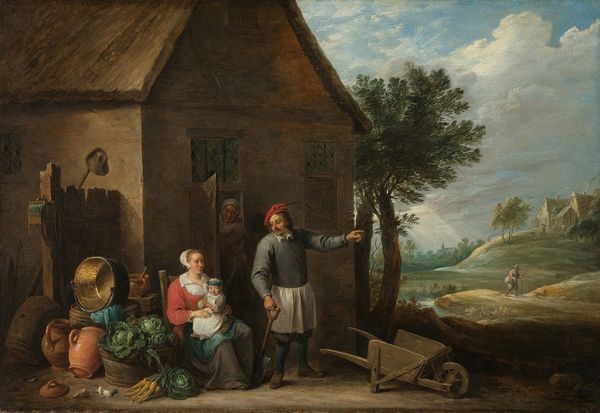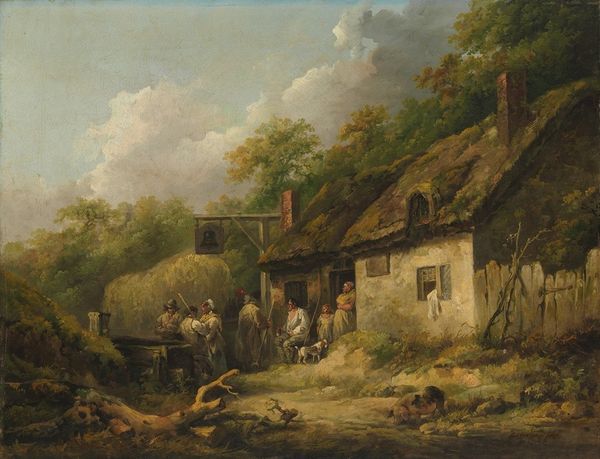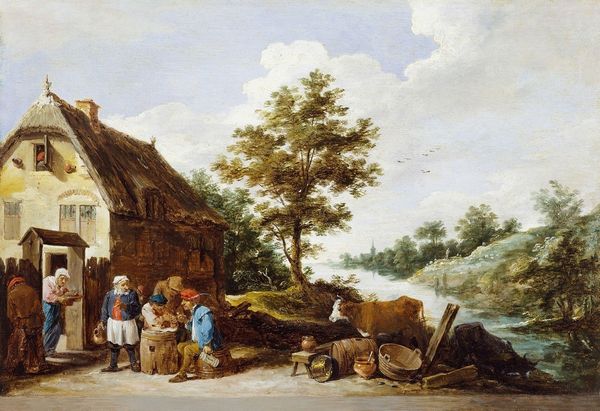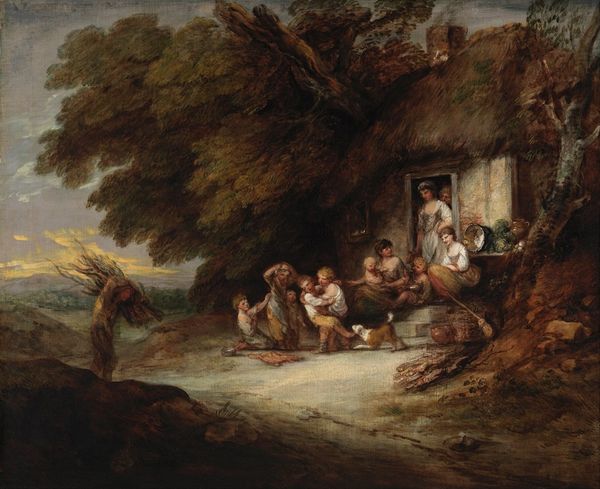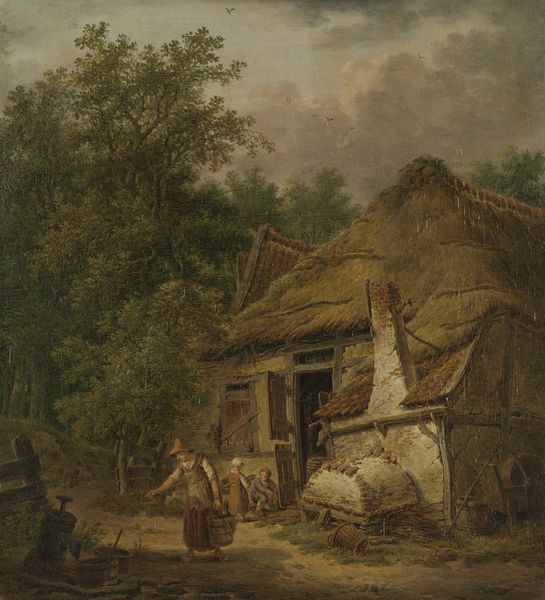
oil-paint
#
gouache
#
baroque
#
dutch-golden-age
#
oil-paint
#
landscape
#
painted
#
figuration
#
oil painting
#
underpainting
#
genre-painting
#
mixed media
#
watercolor
#
realism
Copyright: Public Domain: Artvee
Curator: At first glance, I am struck by the ramshackle nature of this pastoral scene—the decaying cottage juxtaposed with the labor of the peasant woman. Editor: Indeed. We’re looking at "A Cottage with Peasants Milking Goats," an oil on panel painting created circa 1620 by Abraham Bloemaert. It's an excellent example of Dutch Golden Age genre painting. Curator: What captivates me is Bloemaert's structural orchestration. The composition hinges on the interplay between light and shadow, note how the brightest whites contrast against the heavy, brown thatch roof. Editor: From a material standpoint, observe how the texture of the building is so deliberately rendered. This piece is so revealing in that Bloemaert utilizes the materiality of the paint itself to evoke the wear and tear, but also it’s place within the landscape of Dutch society at that time. Curator: Precisely. It isn’t just depiction; the brushstrokes themselves articulate the narrative of rural decline, or perhaps realism, in portraying the mundane. The composition guides the viewer's eye to discover more as one examines all of the details. Editor: And that decay is absolutely tied to the social dynamics, I suspect. Bloemaert isn't simply painting a pretty picture of rural life. There is a critical commentary woven in that alludes to economic realities and shifts in early modern Netherlands. You have the laborers who deal with milking goats and harvesting what resources they can from decaying material. Curator: True, however it might be a leap to confine its interpretation purely to a socio-economic discourse. Structurally speaking, there are very common landscape archetypes. Look how the building and peasant form a gentle "s" shaped curve, a hallmark of landscape art. Editor: Yet that adherence to artistic form is never without an economic component. These forms served a market. We can never forget the materials involved, from paint production to the socio-economic structures that necessitated their sale. It all contributes to its current meaning. Curator: It's certainly an engaging piece—rich with textures and compositional arrangements, isn't it? Editor: Absolutely; its value lies as much in the raw material, that informs the labor to capture Bloemaert’s critical observation of a particular place and time.
Comments
No comments
Be the first to comment and join the conversation on the ultimate creative platform.
